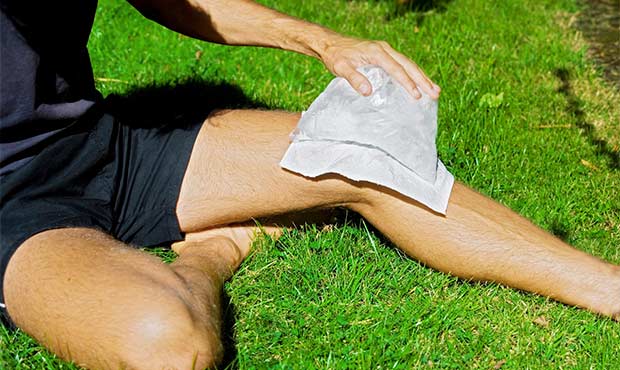
You're out for a pleasant training run when you feel a sudden twinge in your lower calf. You mentally cross your fingers and utter a quick prayer to the running gods. But by the time you arrive home, that subtle twinge has turned into a tight ball of pain.
What should you do next, reach for an ice pack or the heating pad?
When to Ice
According to Dr. Benjamin Thompson, an orthopaedic surgeon at Access Sports Medicine, ice is most effective for acute injuries.
"Excessive swelling can slow the process of healing damaged tissue," Thompson says. "Use of ice therapy on an injury will reduce swelling and pain, as well as decrease blood flow to the treated area. This process will create a more favorable environment for healing and recovery."
To correctly ice an injury, apply cold therapy to the affected area for periods of 20 minutes on and 20 minutes off, as needed. Leaving the ice on too long can damage nerves and other critical tissues. Icing should continue until the swelling is gone and the pain is tolerable.
Many runners use the R.I.C.E. formula to treat a variety of injuries. Rest, ice, compression and elevation (in that order) are standard protocol for all types of acute injuries.
Quick Tip
When to Heat
But what about heat? Is there a place for heating pads and hot tubs in injury treatment?
Dr. Thompson believes that heat therapy has a more important role in the treatment of chronic injuries associated with pain and stiffness.
"I generally advise patients to utilize heat after the acute phase of their injury has subsided and the swelling and pain is under control. This can vary between 2 to 3 days to a week or so, depending on severity," he says. "[This is because] application of heat to an injured extremity increases both blood flow and swelling, which can decrease the body's natural ability to heal itself and prolong the overall recovery."
Ice First, Heat if Necessary
Ice should be your first response to new injuries, but heat may be a good way to treat recurring injuries associated with pain and stiffness. Remember to use the 20 minutes on, 20 minutes off rule for icing to avoid tissue damage, limiting this process to two or three hours in a given day.
If things don't improve after two or three days of rest and regular icing, you may want to consult with your physician or a sports medicine professional.
Connect with us on Twitter, Facebook, Instagram or Pinterest for more tips, recipes and ideas to fuel your ACTIVE life.
 Find your next race.
Find your next race.


